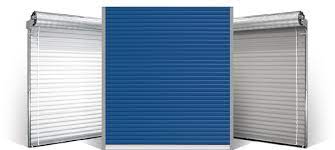Embark on a journey to unlock the secrets of the 8×8 Roll-up Door Guide – a gateway to seamless installation. Discover the key elements that will set you on the path to success in mounting your roll-up door effortlessly. From safety precautions to detailed tool lists, this guide is your compass through the intricate process of door installation. Stay tuned to unravel the mysteries of transforming your space with a secure and functional roll-up door.
Safety Measures for Roll-Up Doors
Ensure the safe operation of roll-up doors by adhering to essential safety measures to prevent accidents and injuries. When installing roll-up doors, it is crucial to follow specific safety guidelines to maintain a secure environment. Always operate the door only when fully installed and free of obstructions. Repairs and adjustments involving springs can be dangerous without proper knowledge, so it’s essential to exercise caution. Children should not operate or play near the door to prevent injuries. Avoid walking through the doorway while the door is in motion to prevent accidents. Regularly check and tighten bolt connections and moving parts to ensure everything is secure. Preventive maintenance is key to ensuring the longevity of the door. By following these safety measures, you can avoid common mistakes, troubleshoot effectively, and ensure the safe installation and operation of roll-up doors.
Essential Tools for Installation
To facilitate the installation process of roll-up doors, the following tools are essential for ensuring a smooth and successful setup. Below is a checklist of tools required for the installation:
| Tools Checklist | |
|---|---|
| Electric drill | Nut driver bits |
| Masonry drill | Impact hammer |
| Chain hoist | Sling |
| Scaffolding | Ladders |
| Hammer | Pliers |
| Screwdrivers | Wrenches |
| Torque wrench | Plumb line |
| Tape measure | Chalk line |
| Water level |
Having these tools handy will not only simplify the installation but also ensure accuracy and efficiency. Remember to wear personal protective equipment (PPE) and refer to safety guidelines throughout the installation process. If you encounter any difficulties during installation, refer to troubleshooting tips or seek professional assistance to avoid any errors. Following proper installation techniques and utilizing the correct tools will result in a well-installed roll-up door.
Detailed Installation Instructions
Inspect the roll-up door carefully for any damage or missing parts before proceeding with the detailed installation instructions. To ensure a smooth installation process, follow these essential steps:
- Installation Techniques: Position the guides and securely install brackets, lifting the door assembly into place with the help of two installers. Attach the brackets and guides to the jambs securely to ensure stability.
- Common Mistakes to Avoid: Verify the wall opening dimensions and plumb of the jambs before rotating the door into the guides. Secure head stops, install stop clips, and handles properly to prevent door damage and personal injury.
- Troubleshooting Tips and Expert Advice: If facing difficulties during installation, refer to the installation manual for guidance or consult with professionals for expert advice on specific issues.
- Product Recommendations and Customer Reviews: Consider customer reviews and expert recommendations for additional insights into the quality and performance of the roll-up door, aiding in making informed decisions regarding cost considerations, budget planning, and energy efficiency benefits.
Assembly and Installation Steps
Starting the assembly and installation process for roll-up doors involves identifying key components and aligning them correctly for a secure and efficient setup. Begin by identifying the head plate bracket and barrel assembly drive end. Orient the barrel and head plate brackets by sliding the drive end of the barrel assembly through the drive bracket bearing. Lift brackets and barrel to bolt to guide wall angles using carriage bolts. Ensure brackets are square and parallel, and center the barrel between them. When installing the curtain, utilize the sling method for less damage, hanging it on slings or heavy ropes capable of supporting its weight. Fasten the top slat to the slings or ropes with wire and center the curtain between head plate brackets. Attach the top slat to rings or studs provided on the barrel assembly. If slat segments are provided, fasten them to rings or studs. Coil the curtain completely onto the barrel and install guide angles.
For troubleshooting tips, seek expert advice if facing installation challenges. Common mistakes include improper alignment and inadequate support during assembly. Customer testimonials often highlight the importance of precise installation for smooth operation.
Maintenance Tips and Additional Steps
When maintaining roll-up doors, ensure to regularly lubricate moving parts and check for any signs of wear or damage. Proper maintenance is crucial for the longevity and smooth operation of your roll-up door. Here are some essential maintenance tips and additional steps:
- Spring tensioning and lubrication techniques:
- Apply spring tension carefully with two workers for safety.
- Wind the tension wheel in the correct direction using steel rods.
- Adjust tension with the door in the fully open position one notch at a time.
- Lubricate guides with paste wax or silicone spray.
- Operational troubleshooting and common issues:
- Ensure the curtain is level and not binding against the guide.
- Install the hood by attaching it to hood bands on bracket plates.
- Emergency repair and quick fixes:
- Complete the installation of a traditional rolling steel door with a spring-assisted system.
- Follow similar instructions for counter shutters, rolling grilles, and other doors with a spring system.
- Weatherproofing strategies and rust prevention:
- Consider weatherproofing strategies to protect your door from the elements.
- Implement rust prevention methods to prolong the life of your roll-up door.
Safety Precautions and Warnings
To ensure the safe operation of roll-up doors, it is essential to adhere to strict safety precautions and warnings regarding their heavy weight and tensioned springs, which can pose serious risks of injury or even death if not handled properly. When dealing with spring tensioning, always exercise caution as the springs are under high pressure and could cause harm if released improperly. Additionally, keep children away from the door to prevent accidents or injuries. Ensure all electrical connections are done by a qualified electrician to avoid any hazards. When using a motor operator, adhere strictly to the manufacturer’s guidelines for safe operation. Finally, remember that only qualified professionals should conduct repairs, adjustments, or installations involving roll-up doors to minimize the risks associated with their operation. By following these safety measures diligently, you can help prevent accidents and ensure the safe use of roll-up doors.
Pre-Installation Preparation and Inspection
Begin by carefully unpacking the roll-up door and conducting a thorough inspection for any signs of damage or missing parts. This step is crucial to ensure a smooth installation process and avoid any issues later on. Follow these key points:
- Material Inspection:
- Inspect the door for any damage or missing components.
- Report any shortages promptly to the supplier.
- Ensure all parts required for installation are present.
- Refer to the installation manual for guidance on the components.
- Installation Steps:
- Unpack the door with caution and check for any visible damage.
- Verify the wall opening dimensions and ensure the jambs are plumb.
- Securely position the guides and install the brackets.
- With the help of two individuals, lift the door assembly into place against the jambs, attaching the brackets and guides securely.
- Tool Requirements:
- Electric drill with nut driver bits.
- Masonry drill or impact hammer.
- Chain hoist, sling, and scaffolding.
- Various hand tools like pliers, screwdrivers, and wrenches, ensuring accuracy with tools such as a plumb line, tape measure, and water level.





